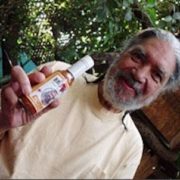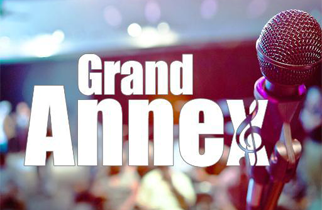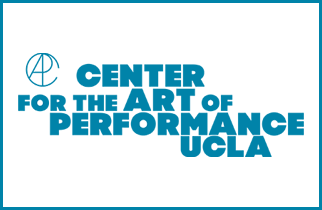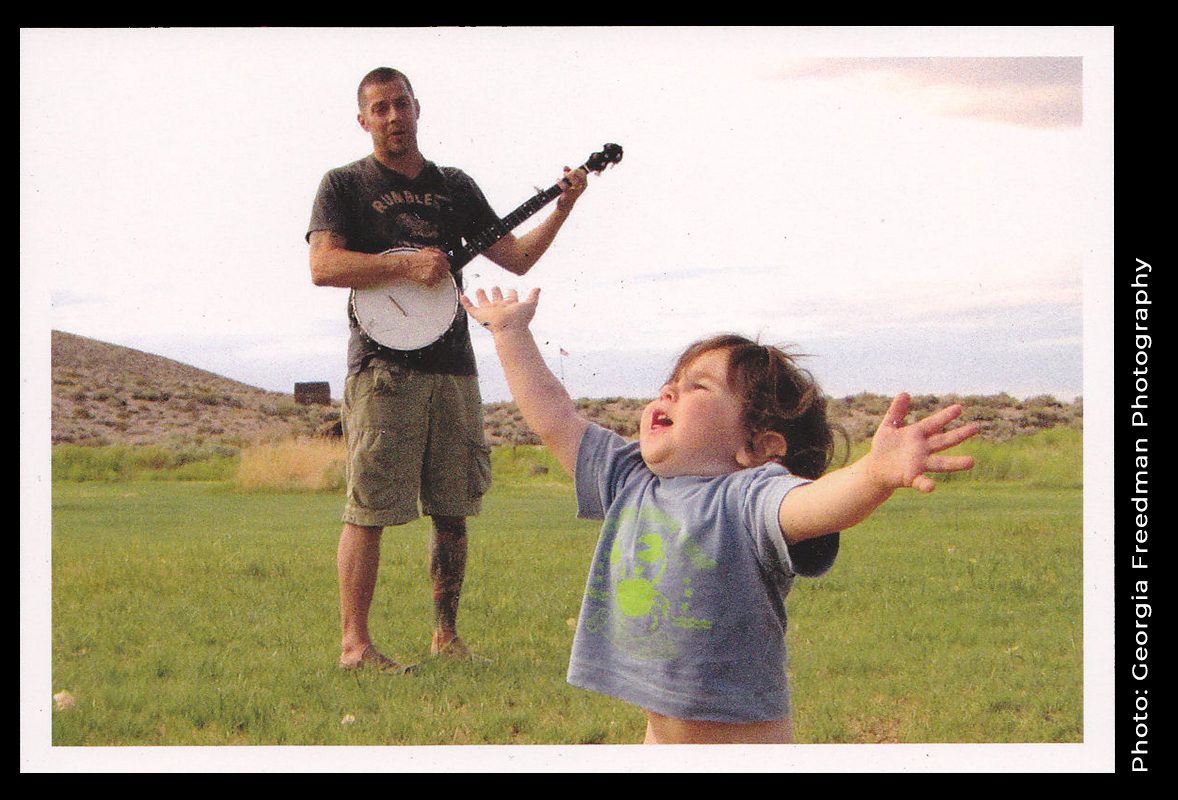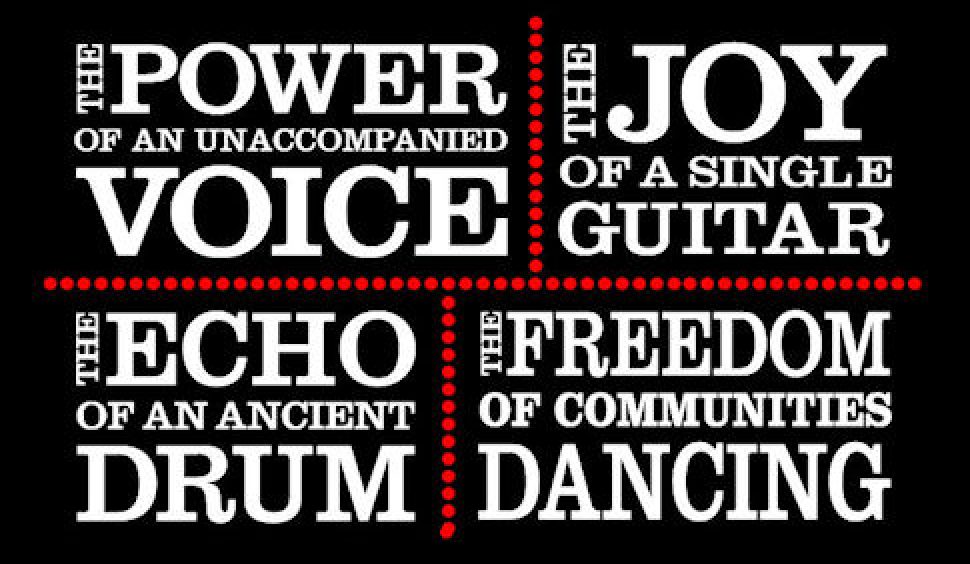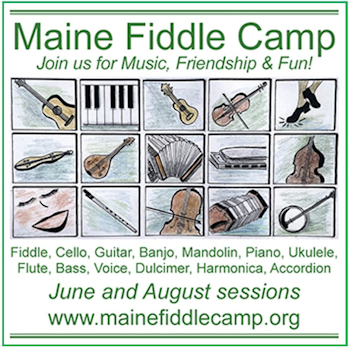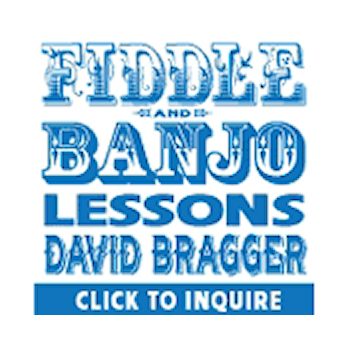REMEMBERING BRUCE LANGHORNE
REMEMBERING BRUCE LANGHORNE
Mr. Tambourine Man
(May 11, 1938—April 14, 2017)
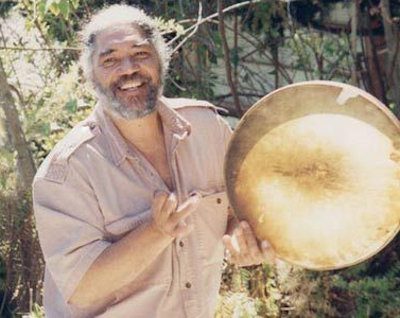 Guitarists have been known to do a lot of painful things to become great—including practicing every waking minute and even sleeping with his guitar like Jimi Hendrix. King of the Delta Blues Robert Johnson went Jimi one further—and reputedly sold his soul to the devil at the Crossroads—Highway 38 in Clarksdale, Mississippi; a Faustian bargain that eventually cost him his life. But no one has gone as far as Bruce Langhorne, who passed away of kidney failure at his home in Venice last Friday. When he was 12 years old growing up in Harlem, he was experimenting with a cherry bomb when it blew up in his hands, blowing off two-and-a-half fingers of his right hand. That was his violin hand, and Bruce had been in training to become a classical violinist; so much for dreaming.
Guitarists have been known to do a lot of painful things to become great—including practicing every waking minute and even sleeping with his guitar like Jimi Hendrix. King of the Delta Blues Robert Johnson went Jimi one further—and reputedly sold his soul to the devil at the Crossroads—Highway 38 in Clarksdale, Mississippi; a Faustian bargain that eventually cost him his life. But no one has gone as far as Bruce Langhorne, who passed away of kidney failure at his home in Venice last Friday. When he was 12 years old growing up in Harlem, he was experimenting with a cherry bomb when it blew up in his hands, blowing off two-and-a-half fingers of his right hand. That was his violin hand, and Bruce had been in training to become a classical violinist; so much for dreaming.
Like legendary Gypsy jazz guitarist Django Reinhardt, who also played with just two fingers, Bruce Langhorne transferred his musical genius to the guitar, and became the leading studio guitarist of the folk era in the early 1960s, and helped one folk singer in particular cross over to the Promised Land of Folk-Rock. That would be Bob Dylan. Langhorne became Dylan’s Moses. Bruce was the Tambourine Man who inspired his greatest song—and then played lead guitar on it—and all the other tracks on Dylan’s landmark 1965 transformational album Bringing It All Back Home, the one with an all-electric side 1, and all-acoustic side 2.
Bruce Langhorne (May 11, 1938 – April 14, 2017)—Mr. Tambourine Man—died on Good Friday. I’m writing this on Easter Sunday, hoping he too might be resurrected—the most beautifully lyrical guitarist of all.
But he doesn’t have to be, for his music will never die. He was the lead guitarist for Bob Dylan’s classic song Mr. Tambourine Man, inspired according to Dylan in Volume 1 of his autobiography Chronicles, by Bruce’s Turkish drum adorned with a ring of metal bells inside the rim like a huge tambourine, which he would bring to their Freewheelin’ Bob Dylan sessions in 1962, where he accompanied Dylan on a traditional blues, Corrina, Corrina. While it didn’t get onto that track, it finally prompted Dylan to immortalize him in another song’s chorus:
https://www.youtube.com/watch?v=fPfcrYAp_zg
Hey Mr. Tambourine Man, play a song for me
I’m not sleepy and there is no place I’m going to
Hey Mr. Tambourine Man, play a song for me
In the jingle-jangle morning, I’ll come following you.
https://www.youtube.com/watch?v=qEca8NTzMuk
I heard it on news station KNX 1070 AM driving home on the 101 freeway yesterday—and that was all you needed to re-imagine the whole song. Lisa Finnie, host of the Dylan Hour every Sunday morning at 11:00 am on KCSN 88.5 FM, opened her Easter Sunday show yesterday with a tribute to Bruce; without a word of introduction she played the master take of Mr. Tambourine Man, with Bruce’s lead guitar weaving gossamer threads of brilliant counterpoint around Bob’s cat-on-a-barbed wire voice and harmonica. Lisa then paid tribute to Langhorne as the song faded away; only then did the show begin.
That’s how I found out he had passed away, and quietly said, “Goodbye, old friend.”
By the way, it was that song—before the Byrds turned it into a number one hit — of which Dylan said, “I could have written “Satisfaction,” but the Stones could not have written “Mr. Tambourine Man,” to which Mick replied, “He’s right.” Guitarist Bruce Langhorne, the muse behind Dylan’s signature song, first appeared on Dylan’s 1962 recording session for The Freewheelin’ Bob Dylan, on the gorgeous rendition of the traditional blues Corrina, Corrina, (a song guitarist Jill Fenimore recorded in her finger-style arrangement on her album Take Two), which Dylan played on the piano with Langhorne playing counterpoint on his 1920 Martin acoustic guitar—the same amazing instrument that gave the riveting “folk rock” sound to both Mr. Tambourine Man and the following year, to Maggie’s Farm, when plugged into his Fender Twin Reverb Amp. That was the birth of Dylan’s new sound—which Michael Bloomfield then transformed into his Fender Stratocaster electric version that got him booed off the stage at the Newport Folk Festival in July. Nobody ever booed Bruce Langhorne off the stage.
Langhorne spoke often and lovingly of why he and Dylan worked so well together: Dylan created a “thread” in his arrangements that he could build on; a telepathic connection; without that thread it would not have happened. If you listen to Bob’s master take from Bringing It All Back Home you will hear it, complete with the most thrilling version of Dylan’s voice and Langhorne’s Bach-like counterpoint harmony to everything Dylan lays down in the melody from vocal to harmonica. Roger McGuinn needed an electric Rickenbacker 12-string to create anything comparable for the Byrds’ hit version later on that year. When you see a picture of Langhorne’s magical-sounding small-bodied 1920 Martin 1-21 you can hardly believe that much music is coming out of that sound hole.
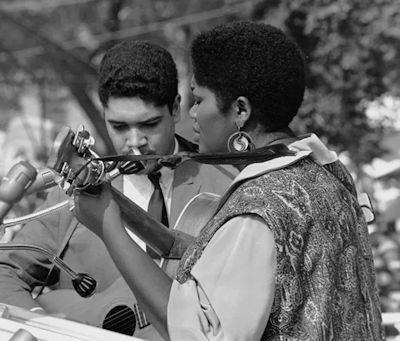 Bruce Langhorne was the session guitarist of choice for the major folk artists of the sixties; Joan Baez, her sister Mimi Farina and husband Dick Farina, Tom Rush, Carolyn Hester and Odetta—whom he accompanied at the March on Washington, August 28, 1963, just before Dr King spoke. They all wanted to re-create that shimmering, precise Brandenburg Concerto-like counter-melody for their records. It’s no wonder that Bruce’s favorite piece of music is not the song which Dylan named after his omnipresent tambourine, but Bach’s Well-Tempered Clavier. Before the full-blown psychedelic rock sound of the mid-to-late sixties emerged, these Langhorne-inflected immersive finger-style guitar arrangements lifted modern folk music out of the monotonic style of accompaniment long associated with the early folk sounds of Burl Ives, Woody Guthrie and Cisco Houston. If any lone-practitioner of a single instrument could be credited with doing so, it was Bruce Langhorne who put the music in “folk music.” He is the reason I always preferred Dylan’s own versions and original arrangements of his classic songs—like Mr. Tambourine Man, Love Minus Zero/No Limit and She Belongs to Me—to better known folk rock versions on the radio. At that point I couldn’t put a name on it—but my ears could tell the difference—and the difference was Bruce Langhorne.
Bruce Langhorne was the session guitarist of choice for the major folk artists of the sixties; Joan Baez, her sister Mimi Farina and husband Dick Farina, Tom Rush, Carolyn Hester and Odetta—whom he accompanied at the March on Washington, August 28, 1963, just before Dr King spoke. They all wanted to re-create that shimmering, precise Brandenburg Concerto-like counter-melody for their records. It’s no wonder that Bruce’s favorite piece of music is not the song which Dylan named after his omnipresent tambourine, but Bach’s Well-Tempered Clavier. Before the full-blown psychedelic rock sound of the mid-to-late sixties emerged, these Langhorne-inflected immersive finger-style guitar arrangements lifted modern folk music out of the monotonic style of accompaniment long associated with the early folk sounds of Burl Ives, Woody Guthrie and Cisco Houston. If any lone-practitioner of a single instrument could be credited with doing so, it was Bruce Langhorne who put the music in “folk music.” He is the reason I always preferred Dylan’s own versions and original arrangements of his classic songs—like Mr. Tambourine Man, Love Minus Zero/No Limit and She Belongs to Me—to better known folk rock versions on the radio. At that point I couldn’t put a name on it—but my ears could tell the difference—and the difference was Bruce Langhorne.
So I could hardly believe it when I got to meet him at a booking I had in 1996 for the annual fundraiser for the Center for the Study of Political Graphics—the repository of incendiary political art going back to before the Cuban Revolution, curated by Carol Wells. If you watch programs like The American Experience and documentaries like Frontline on PBS you have seen samples of their definitive collection whether or not you paid attention to the closing credits. There is nowhere else in town—or across the country—where you can find political graphic art that came out of the Vietnam War, the coup in Chile, the war in Iraq, or smaller scale debacles like Norman Mailer and William F. Buckley’s run for Mayor of New York.
Both Bruce Langhorne and the Doors Rock and Roll Hall of Fame drummer John Densmore were on the bill, and to my shock and awe actually backed me up on my protest song Tell It to the Wall—written in response to Robert McNamara’s 1995 memoir In Retrospect, apologizing for his role in ratcheting up the escalation of the Vietnam War upon Johnson’s election in 1964—the race that was supposed to save us from the “war-monger” Barry Goldwater:
Hear you wrote a book, Mr. McNamara, admitting you were wrong
Terribly wrong
Well it’s too little and thirty years too late
To sing your sad, sad song.
Tell it to the Wall
Tell it to the Wall
It’s not for you your tears should fall
Tell it to the Wall.
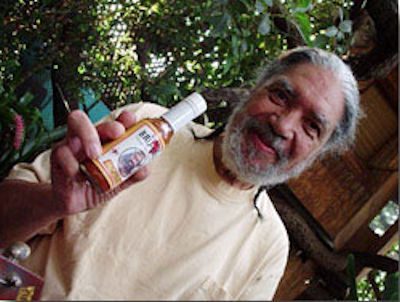 After the evening’s performance I tentatively approached Bruce Langhorne and asked him if he might be willing to record it with me at one of my regular recording sessions (that’s what I’m usually doing on Tuesday evenings). To my amazement, he said, “Yes, I like the song; just send me a tape of it so I can do it right.” I wound up being invited over to his home in Venice for a rehearsal, and that’s where I found out about his other claim to fame: Brother Bru Bru’s African Hot Sauce (Bruce is black). What distinguished Bruce’s hot sauce from Tabasco sauce and all the other hot sauces on the market is that his is extremely low-to-zero- sodium. He created it out of necessity, when he learned in 1992 that he had diabetes, and had to eliminate sodium from his diet. He gave me two complimentary bottles when I left, and I have been a loyal customer ever since.
After the evening’s performance I tentatively approached Bruce Langhorne and asked him if he might be willing to record it with me at one of my regular recording sessions (that’s what I’m usually doing on Tuesday evenings). To my amazement, he said, “Yes, I like the song; just send me a tape of it so I can do it right.” I wound up being invited over to his home in Venice for a rehearsal, and that’s where I found out about his other claim to fame: Brother Bru Bru’s African Hot Sauce (Bruce is black). What distinguished Bruce’s hot sauce from Tabasco sauce and all the other hot sauces on the market is that his is extremely low-to-zero- sodium. He created it out of necessity, when he learned in 1992 that he had diabetes, and had to eliminate sodium from his diet. He gave me two complimentary bottles when I left, and I have been a loyal customer ever since.
He brought that same 1920 1-21 Martin to our recording session (for which, as a member of Local 47, I paid him union scale for his work). He explained that he was playing on the same strings that were practically glued to his guitar, because he was never able to duplicate their inimitable sound with new strings. From Mr. Tambourine Man to Tell It to the Wall in the basement of Scott Fraser’s Mt. Washington home recording studio, Bruce Langhorne brought his one-and-only 1920 Martin acoustic guitar—with its unchanged strings—to transform my unadorned demo-quality recording into something truly special. Like the Brothers Grimm Rumpelstiltskin this musical alchemist spun straw into gold.
He repeated the magic for a second recording session the following year in which we recorded a love song I wrote for my mother—from the narrative point of view of my father—called Something’s Missing, with this chorus:
I can’t help feeling you beside me
Doing the things you used to do
Still I know that something’s missing
And what that something is, is you.
Bruce’s integrated guitar solos and decorations raise it to the level of a fully professional recording.
It was during the rehearsals for these sessions that I learned something of his background. That childhood fireworks accident left him with only two-and-a-half fingers, like legendary Gypsy guitarist Django Reinhardt, whose fingers were damaged in a bedroom fire when he was 17—as the result of which Bruce realized that he would not be able to pursue his dream of becoming a classical violinist. But he made a virtue of necessity by transferring his musical genius to the guitar, and compensating every way he could for the loss of his two-and-a-half right-hand fingers. When you look at an early photograph of Bruce, however, you notice something else—how the space the cherry bomb’s explosion excavated between his right-hand fingers may well have contributed to the precision in his playing. For one, he couldn’t strum at all: he was doomed—or destined—to become a finger-style guitarist. And two, each finger had to strike a string alone—there were no arpeggios—so Bruce had to make the most of every single note—which he did. And three, as reported in the New York Times obituary recording engineer Scott Fraser sent me last night—in remembrance of those indelible recording sessions neither of us has ever forgotten—Langhorne’s playing was the result of his depth of feeling, not just technical prowess. His heart and soul also compensated for the loss of his fingers. To read the full Times obituary—and appreciate what a loss to the world of music is represented by the death of this 78 year-old recording artist—follow this link with our compliments; unlike the Los Angeles Times, digital articles from the New York Times are free:
Bruce’s long-time friend Cynthia Riddle came to one of my annual Bob Dylan Million-Dollar Birthday Bashes that I produced at The Talking Stick Coffee House (before it closed a few years ago). She brought me well wishes and gifts from Bruce, since a stroke had left him partially paralyzed and he was no longer able to play and accept the invitation I had sent him to be a part of the show. But he wanted me to have another bottle of Brother Bru Bru’s African Hot Sauce—without sodium, and one for every musician in the show. I put mine on the stage speaker for the duration of the concert—like a presiding deity or rare spirit (with a beautiful photo of Bruce smiling on the label) to bless the proceedings.
Bruce was a celebrity, but you would never know it from the authentic and cheerful nonchalance with which he inspired local artists like me to believe we too could live in the world of the imagination. He was born in the same month as Bob, May 11, 1938. He passed away from kidney failure on Good Friday, April 14, 2017, just a month shy of his 79th birthday. Every time you put on one of Dylan’s classic early sixties albums, you will find yourself smiling with joy, and Bruce will have risen again. Nor do you need to go back that far: Bruce produced his own solo album in 2011—with percussion and keyboards to be his swan song to music. It’s called—what else?—Tambourine Man. He is survived by his wife of 29 years, Janet Bachelor.
Bruce Langhorne was an American original who lived “to make a joyous noise unto the Lord.” May you rest in peace, Brother Bru Bru.
Ross Altman has a PhD in Modern Literature from SUNY-Binghamton; he is a member of Local 47. Ross may be reached at greygoosemusic@aol.com

